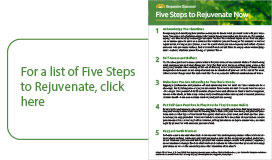
Teaching can be stressful. Over the last year, with the addition of virtual classrooms, hybrid classrooms, and socially distanced classrooms, teaching became even more stressful. Before the pandemic, teachers worked long hours creating lesson plans, grading papers, and volunteering for after-school tutoring, sports, or other activities. Researchers at the University of Missouri-Columbia completed a study in which they found that 94 percent of middle school teachers experience high levels of stress (Herman et al., 2020), and too often teachers brought this stress home with them. Creating a healthy work-and-life boundary to prevent burnout and stress is critical for teachers to remain healthy and stay engaged. But how do you add ways to de-stress to a teacher’s already full plate? In other words, how can teachers deal with their stress without further stressing themselves out? What follows are some practical ways to leave the stresses and responsibilities of teaching at school so you can maintain a healthy balance between work and home.
Use a Journal Collecting your thoughts in a journal after the school day ends can help you leave the day’s events at school rather than bringing them home. Spend a few minutes writing down the day’s successes and challenges to learn where you can leverage those successes and improve on the challenges. This effort will allow you to purge your thoughts from the day’s events and reduce your stress and anxiety.
Have a Work Buddy Find a work buddy, someone you feel comfortable talking to and can turn to when you need to process and release stress. Make sure it’s someone who won’t let the conversation turn into complaining. The key here is to find a buddy who helps you learn how to vent in a healthy way without becoming consumed with negative feelings or thoughts. A study by Torre and Lieberman (2018) found that having someone you trust to talk with can lower your stress levels. Finding your work buddy will allow you to appropriately vent before you go home.
Get Outside Get back outdoors! Going for a walk, taking a short bike ride, or just meditating in a favorite outdoor spot can be great ways to reduce stress. We live in a world that is constantly connected by phone calls, texts, and emails. Pausing our connectivity long enough to get outside for some fresh air can lower stress levels, reduce anxiety, and improve our overall mood (Joye & Bolderdijk, 2015). It can be easy to get home and fall into the trap of working more or simply binge-watching your favorite show. Instead, try taking a 15-minute break with nature to restore your balance.
Many studies have shown that teacher stress is linked to poor coping mechanisms for creating a balance between their home life and work-life (Montgomery & Rupp, 2005). Maintaining this equilibrium has become more challenging as the pandemic has deeply affected teaching and learning. By creating a more appropriate balance between work and home, teachers can take better care of their health. Simple but effective strategies such as journaling, having a work buddy, and getting outdoors can lower a teacher’s stress and improve their overall mood. Keep in mind that, in the end, healthy classrooms are created by healthy teachers.
References
- Herman, K. C., Prewitt. S. L., Eddy, C. L., Savale, A., & Reinke, W. M. (2020). Profiles of middle school teacher stress and coping: Concurrent
and prospective correlates. Journal of School Psychology, 78 (February), 54–68. https://doi.org/10.1016/j.jsp.2019.11.003 - Joye, Y., & Bolderdijk, J. W. (2015). An exploratory study into the effects of extraordinary nature on emotions, mood, and prosociality.
Frontiers in Psychology, 5 (1577). https://doi.org/10.3389/fpsyg.2014.01577 - Montgomery, C., & Rupp, A. A. (2005). A meta-analysis for exploring the diverse causes and effects of stress in teachers. Canadian Journal
of Education / Revue Canadienne De L’éducation, 28(3), 458–486. https://doi.org/10.2307/4126479 - Torre, J. B., & Lieberman, M. D. (2018). Putting feelings into words: Affect labeling as implicit emotion regulation. Emotion Review, 10(2),
116–124. https://journals.sagepub.com/doi/pdf/10.1177/1754073917742706


